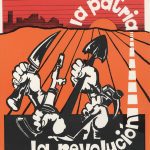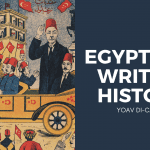by Joan Neuberger
Not Even Past has always reviewed and commented on historical films. This week we take a look at some of our favorite historical novels. Historians often criticize novels set in the past, partly because they see fiction writers as falsifying and distorting the record, but also because they seem to simplify the past by narrating historical events through the lives of fictional individuals.
But historical fiction has had an enduring appeal, both the novels that use historical settings purely as colorful background for formulaic melodramas and those that attempt to explore the past in ways just out of the reach of historians. The bedrock of the historian’s work is, of course, our commitment to documentary evidence. Sure, we speculate, we ask “what if,” and we tell stories, but our first responsibility is to the evidence and that limits us when it comes to understanding the complexities of historical experience. Historical novels allow us to imagine what it felt like to be an Empress, what motivated an act of heroism in the face of mortal danger, what a soldier, torn between exhilaration and fear, sees and smells and feels on a chaotic battlefield. In a recent discussion, best-selling historical novelist Philippa Gregory said that historical fiction can get to a “truth beyond historical truth.”
All the novels we review this week show us aspects of historical experience that we value both as general readers and professional historians. They all have strong, complex characters, whose decisions, actions, thoughts, and feelings show us significant facets of history, even if they don’t adhere to the historical record–or perhaps especially when they don’t adhere to the historical record. Good historical novels don’t detract from the work we do as historians, they complement it.
Last year I was on a panel at the AHA (The American Historical Association annual convention) on historical fiction. The other panelists included the novelists Geraldine Brooks and Peter Ho Davies and two historians who have experimented with writing historical fiction, Donald Ostrowski and Jane Kamensky. The discussion was lively and raised a number of interesting issues about historical fiction. You can see a video of the whole two-hour session here.
Three topics raised then are worth mentioning today. First, Geraldine Brooks said that while she does an enormous amount of research, she needs holes in the research in order to find her own way into the lives of her characters; in order to find both her own voice and a way of conveying her characters’ voices.
Second, after discussing the ways that historical fiction can make the past real by bringing it close to us, by making peoples’ lives in the past seem similar to our own, Sarah Maza (in the audience) noted that it is equally important to show the distance between the present and the past. The effectiveness of any work of history, whether documentary or fictional, can often be found in the particular balancing of proximity and distance. In that sense, novels and non-fiction historical writing share with each other the characteristic element often noted about photographs–that they function most powerfully in their ability to convey our fundamental, unconscious sense of living in the past and present simultaneously.
Third, the best historical fiction also carefully balances the demands of accuracy and invention. Jane Kamensky defended the value of “deception” in fiction not as a trick or as melodrama (as in Hollywood films that insist on inventing love stories because audiences like them), but because novels are at their heart a deception in the service of a kind of knowledge. The whole point of writing a historical novel for some historians is to escape the binding of documentary evidence. But other writers start out enjoying the freedom from footnotes and then find themselves inching their way back towards maximum accuracy. This is not necessarily a contradiction: accuracy of details about clothes and food, or the rituals of life at a royal court, or among peasants haying or workers striking can literally set the stage for creatively exploring interior lives. But as historian Lisa Hilton got deeper into her research for a novel about an isolated French village during World War II, she found herself wanting it to be as “real” as possible. When she was finally able to get her laconic neighbors to talk about the war and the Nazi occupation, she found that “the war consisted of a series of sharply-weighted individual decisions, often insignificant in themselves, but collectively forming a history too delicate for written sources to convey.”
Some historians have begun to cross the line in the other direction, writing what they sometimes call “creative history.” Thomas Keneally did it first or at least most spectacularly, in 1994 in Schindler’s List. Numerous historians have recently followed that path in writing what Alison Frazier calls “lightly fictionalized history” (watch for Frazier’s contribution to NEP Novel Week later this week). The historian of science, Rebekah Higgitt devotes a post on her blog “teleskopos” (and cross-posted to the excellent History of Science blog, Whewell’s Ghost) to the problems of lightly fictionalizing in novels about science. She ends by confessing that for her there sometimes can be too much history in historical fiction. I have certainly felt that way when reading some acclaimed historical novels: enough already! get on with the story, get back to the drama!
I think the best historians have found ways to talk about the complexities of history as it is lived, and that we have learned to combine carefully nuanced analysis of texts with more vivid story-telling, but as readers, we still sometimes want more than our commitment to documents allows us. We want to free ourselves to imagine our subjects taking up their own lives and, as Dickens put it, to be the heroes of their own lives. The best historical fiction does that.



